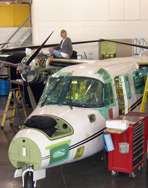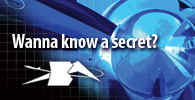from the shop floor: get ready for winter


We're introducing a new feature called “From the Shop Floor” that will feature maintenance tips gathered from the best, most experienced technicians from throughout Twin Commander's authorized service center network.
This first installment is from Kerry Leifeld, director of maintenance at Byerly Aviation in Peoria, Illinois. Kerry has been with Byerly for more than three decades, and among his other accomplishments he and his team maintained the Shrike Commander that Bob Hoover flew at airshows around the country for many years.
It's October, and in Peoria summer's sultry heat has been replaced by cooler fall weather. Thanksgiving is just around the corner. But Kerry would like to remind Twin Commander owners that before you know it, the balmy days will wan, the thermometer will dip below freezing, and winter will begin to settle in. Kerry says that now, while the weather is still pleasant, is the time to make sure your Twin Commander is prepped and ready to take on a long, cold, and harsh season. Here are a few simple checks to confirm that your airplane is indeed ready for winter duty.
- Check deice boots for pinholes. Cycle the boots to make sure they inflate properly and hold pressure. If not, contact your Twin Commander service center for immediate replacement.
- Check wiper blades for condition and functioning.
- Check anti-ice functions including engine inlet heat, static port heat, fuel vent heat, pitot heat, propeller heat, and windshield heat (check high and low settings). Activate the appropriate heat source for about 30 seconds, then make sure the component it is at least warm to the touch. Consider upgrading pitot heat heads to the higher-wattage units specified in service letters 309A and 343.
- Aircraft batteries should fully charged. They also need to be reliable. Check to make sure the batteries have not exceeded the manufacturer's recommended replacement interval.
- Examine landing gear struts and brake components before every flight to make sure they are free of grit, sand, ash, or other seal-destroying contaminants used on ramps, taxiways, and runways during a snowy and/or icy winter.
- Make sure the wing inspection light is operable and will illuminate wing leading edge surfaces at night.
- Ensure the autoignition system is functioning per the airplane flight manual (continuous duty or on-off cycling). Twin Commander Custom Kits 138 and 139 address autoignition problems.
- Check tire pressures, and top off with nitrogen to prevent expansion and contraction that leads to loss of air.
- Lubricate elevator and rudder trim jack screws, and check integrity of jack screw seals so that moisture can't penetrate the system and freeze at altitude.
- If you fly a 690A or B and the airplane is deiced, make sure deicing fluid is not sprayed directly into the ram air duct on top of the aft fuselage. The fluid runs down the duct and into the cabin air distribution system. When bleed air is turned on the fluid will go into the cabin.
- When removing snow from the airframe, use a good, clean, soft-bristle broom. Inspect the broom beforehand for metal shavings and other debris that will scratch the painted surfaces.
- Towing an aircraft on ice increases the potential for exceeding the tow limits on the nose gear, which can affect the steering mechanism. Before every flight examine the nose gear steering cylinder upper housing mount. If the four bolts on the mount are sheared, do not taxi the airplane.
Discuss this article in the forums...








